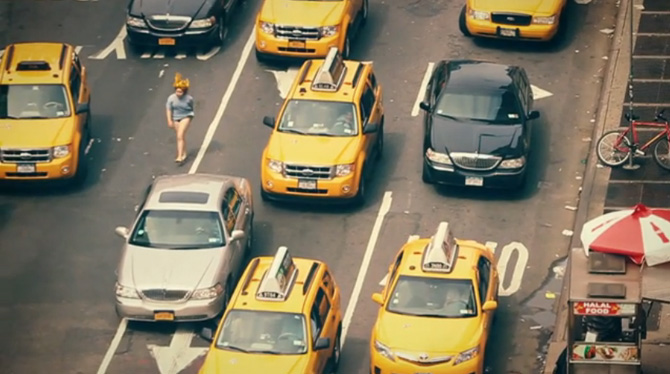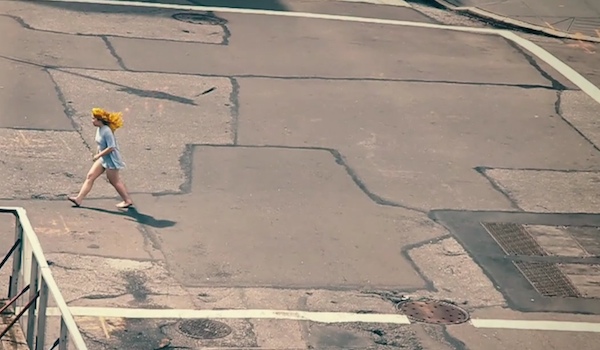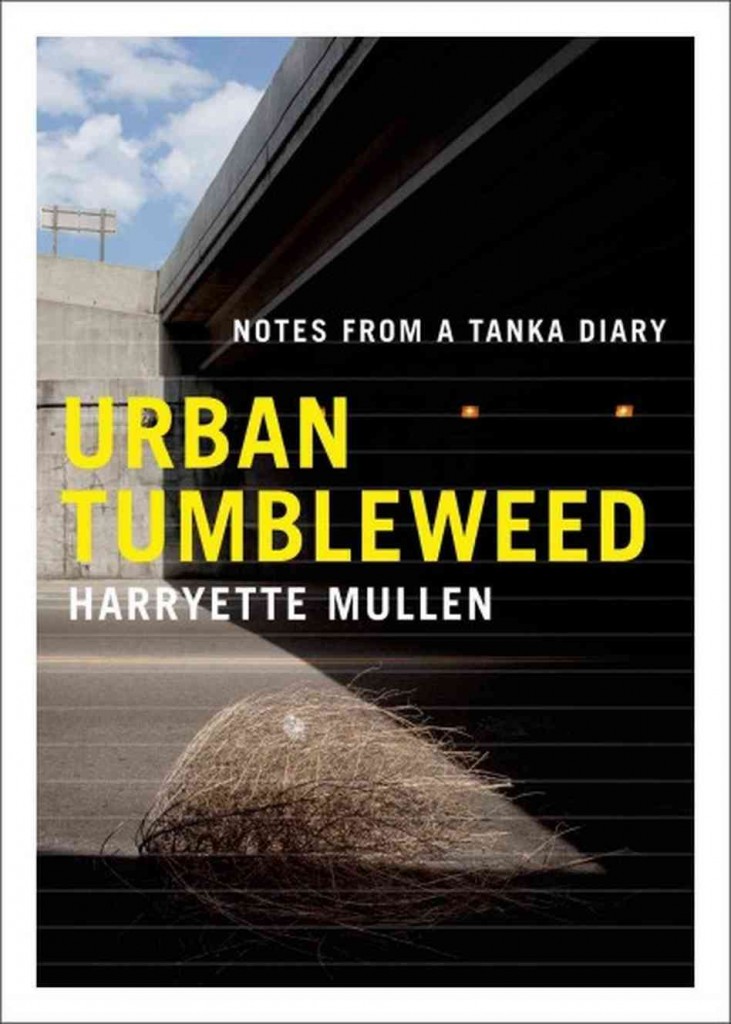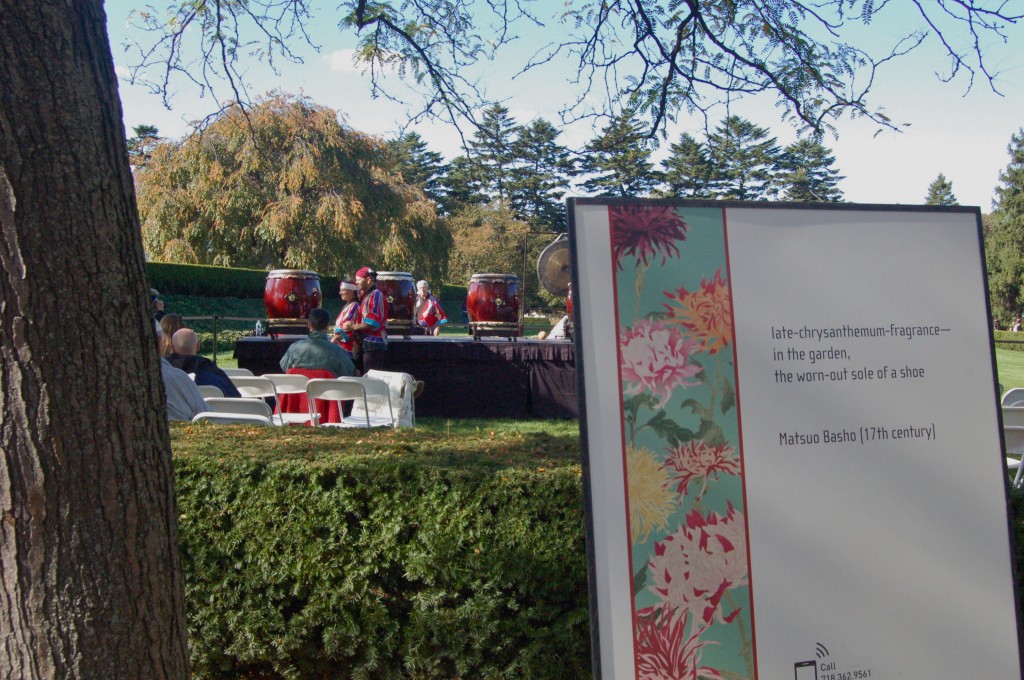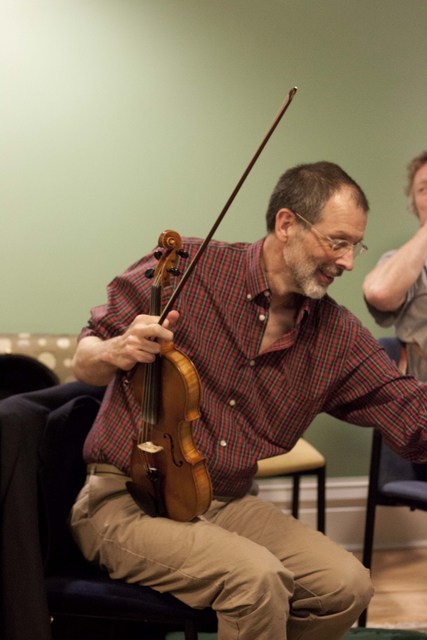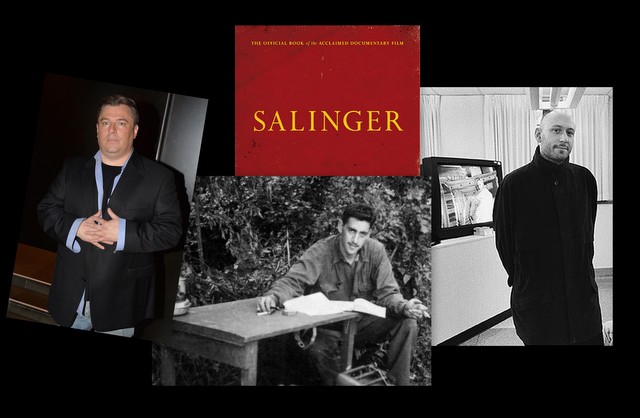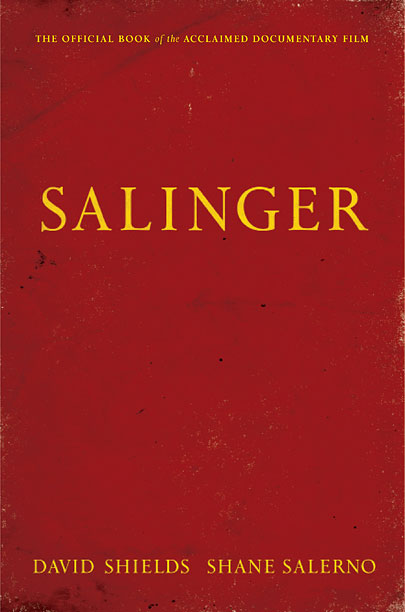
The other day Pat Keane dashed off 10,000 words on Wordsworth’s daffodils and sent them to me wondering if I might want them for Numéro Cinq. He starts off with a detour through the mine field of contemporary American literary criticism, the still fresh battles fought between the proponents of intrinsic criticism and extrinsic criticism, the New Critics who value “close reading” and the contextual critics who bring in tradition, influence, history, biography and sometimes psychoanalysis to help explain a poem. Helen Vendler’s analysis of the Wordsworth poem stands as an example of the former and after giving it fair due, Pat launches into what he whimsically calls “a few contextual elements” — those, um, 10,000 words more or less, starting with Dorothy Wordsworth’s journal entry (see facsimile page below) on the day she and her brother saw the daffodils and ending with Immanuel Kant’s immortal line about the starry heavens and the moral law. This is a gorgeous essay on criticism, on the provenance of a poem, and on Wordsworth (and his sister) — also a wonderful re-visioning of a poem that sometimes is difficult to see because it has, yes, become oh so familiar.
dg
—
As my doubly plural title indicates, I’ll be wandering beyond the received text of one of the most familiar poems in the literary canon, “I Wandered Lonely as a Cloud”—Wordsworth’s best-known poem, though demoted by some to “that damned thing about daffodils.” Since its initial publication, in 1807, the poem has been parodied and admired, despised and exalted. Today, though it can still produce an occasional groan, it is generally ranked among Wordsworth’s small triumphs, one of his self-described “simple songs for thinking hearts.” That simplicity is complicated by the fact that, while we rightly consider it one of Wordsworth’s “signature” poems, it bears the signature of more than one Wordsworth; indeed, of more than
two. Yet it remains quintessentially “Wordsworthian,” both intrinsically and thematically. For “I Wandered Lonely as a Cloud” gives us, writ small, the theme—“the spontaneous overflow of powerful feelings…recollected in tranquility”—of such indisputably major poems as “Tintern Abbey,” the opening Book of Wordsworth’s autobiographical epic,
The Prelude, and the great “Ode: Intimations of Immortality from Recollections of Early Childhood.”
[1]SPACE
The mixed reception of the Daffodils poem is not an anomaly. Wordsworth’s road to recognition was a rocky one, and even after he had “arrived,” he was still subjected to withering criticism. No one who has read it can ever forget the opening of Francis Jeffrey’s
Edinburgh Review reception of Wordsworth’s long-awaited epic poem,
The Excursion. When it finally appeared, in 1814, Jeffrey famously dead-panned, “This will never do.” It’s hard for us to know whether to laugh or to cry; Wordsworth did neither. Seven years earlier, his friend and admirer, Margaret, Lady Beaumont, underestimating the “invincible confidence” of the poet, thought he would be distressed by the disparaging reception of
Poems, in Two Volumes (1807). Responding, Wordsworth pronounced himself unperturbed by temporary attitudes. Quoting another friend well known to Lady Beaumont, he insisted that a “great and original” poet “must create the taste by which he is to be relished; he must teach the art by which he is to be seen.”
[2] That was certainly the case with Wordsworth, who endured savage, often belittling criticism before he eventually triumphed, becoming the dominant poet of the 19
th century, and, after a brief decline in the earlier twentieth century, reemerged in our own time as a monumental figure—widely, if not universally, considered the major poet to have written in English between Milton and Yeats.
SPACE

SPACE
The friend Wordsworth quoted to Lady Beaumont was, of course, Samuel Taylor Coleridge, who inspired, and was inspired by, Wordsworth and who, as a critic, did more than any other single figure to advance the case for Wordsworth as a major poet. But he was also aware of “defects” in his friend’s poetry, and readers who continue to resist that “damned thing about daffodils” will be heartened to know that he, too, thought that whatever flashed “upon that inward eye,” it ought to have been something rather more momentous than a bunch of “daffodils,” which he italicized to emphasize the trivial nature of what was being “retrospected.” As we shall see, given what he considered the bathetic emphasis on mere daffodils, he judged what have become the most famous lines in the poem—“They flash upon that inward eye/ Which is the bliss of solitude”—to be an example of “mental…bombast.”[3] As we’ll also see, though Coleridge presumably didn’t know it, those two lines were actually not written by Wordsworth, at least not by William Wordsworth. But this takes us outside the autonomous, internal world of the poem, and I want to begin with an intrinsic reading.
SPACE
The Daffodils and Helen Vendler

Helen Vendler
1
As it happens, the critic and teacher generally recognized as the most acute living exponent and practitioner of intrinsic criticism, Helen Vendler, writes at length about “I Wandered Lonely as a Cloud” in the third edition of her superb text for college students, Poems, Poets, Poetry.[4] After a brief two-page analysis of Robert Herrick’s “Divination by a Daffodil,” she devotes the remaining pages of her 11th chapter, “Writing about Poems,” to Wordsworth’s daffodils poem. As an intrinsic critic, Helen Vendler preaches and practices close reading, or explication. For her, a poem is essentially an autonomous artifact, a work of art to be experienced in and of itself. And it is to be experienced, she says (323, 329-31) in two somewhat different but equally indispensable ways: temporally (unfolding itself in time, with a beginning, middle, and end) and spatially (viewed from a distance as a space full of elements set in relation to each other). Vendler is, of course, aware of authorial and historical contexts: who the author is, when he or she wrote, and under what circumstances. But in examining and writing about a poem, she is primarily engaged by the interrelated elements within the particular text itself—its words, families of words, sentences, sounds (alliteration and assonance), rhyme and rhythm, etc.
As one can see from what she has to say about many of the poems in her book, not least “I Wandered Lonely as a Cloud,” this focus on close reading is immensely illuminating. Praising “a good paper,” the sort she wants students to write, Vendler says such a paper “leaves your readers, when they come back to the poem, feeling ‘Oh, yes! And yes! Of course!’ It makes readers see aspects of the poem they may not have noticed themselves, in their more cursory reading of the poem, but now see clearly because you have showed them those things” (336). This is precisely Vendler’s own great gift. “Yes, of course; why didn’t I see that for myself?” so many of us have said over the years, responding to one or another of her brilliant close readings: explications which clarify almost everything. I said “almost everything” by design—as Browning’s Duke says in “My Last Duchess”—because, in her emphasis on the internal dynamics of the individual poem, Vendler omits most external factors. She’s perfectly aware of the contexts beyond the poem. As she says herself of this particular poem, “I Wandered Lonely as a Cloud”: it can “be set in larger frames,” for example, “among other Wordsworth poems,” or “among other Romantic poems,” or “among poems about memory; and so on” (336). As I’ve already suggested, I will be exploring, among others, precisely those “larger frames”; but, even then, there is much to be said in favor of close reading.
There was a time, prior to the advent of the modern pioneers of close reading, the so-called “New Critics” of the 1940s and ‘50s, when it was perfectly acceptable for college professors, supposedly discussing with their students such a poem as (to choose an example once cited by the critic Richard Fogle in demonstrating old critical shortcomings) Wordsworth’s “Tintern Abbey,” to say little or nothing about how the poem actually “worked.” Instead, they would lecture about the “occasion” of the poem (the tour made by Wordsworth and his sister Dorothy); about the intense personal and literary relationship between the Wordsworths and Coleridge; and about the political context in which the poem was written (the era of the French Revolution, of which Wordsworth and Coleridge were initially ardent enthusiasts). And then, as class-time was running out, the professor would conclude by saying something like: “as for the poem itself—ah, beautiful, is it not!” This was not good enough: indeed, it was just such cursory, or negligent, treatment of poems that gave rise to the New Critics.
It’s not that such contexts don’t matter. Indeed, they mattered to Wordsworth himself, who sometimes incorporated them into the poem, or at least its title. For example, he makes sure, toward the end of “Tintern Abbey,” that readers realize that his sister has been present all along, as a silent auditor (making the poem a kind of surprise dramatic monologue). In addition, his own long title —“Lines Composed a Few Miles above Tintern Abbey on Revisiting the Banks of the Wye During a Tour”—gives us the precise circumstances of the poem’s composition. And his inclusion of the date, “July 13, 1798,” one day short of Bastille Day, the anniversary of the outbreak nine years earlier, of the French Revolution, is intriguing since the poem itself says nothing about politics, an absence which is itself not without interest. Unfortunately, too many historically-sophisticated critics, especially the so-called New Historicists, have so emphasized this “absence” or “political evasion” on the part of Wordsworth—what is “repressed” or “not said” in the poem—that they de-emphasize what is there, actually present in the poem. Reading through the prism of politics offers its own illuminations, but this re-swinging of the critical pendulum has ironically brought us back to the situation earlier addressed by the intrinsic critics who preceded Helen Vendler: the need to read a poem as a poem, and not as something else, either a political tract or a “message.” In The Prelude and elsewhere, Wordsworth can hardly be said to avoid politics. But a poet has the right to choose his own subject matter and theme; in “Tintern Abbey,” his focus is on his psychological-imaginative engagement with the landscape.[5]

2
Vendler begins her discussion of “I Wandered Lonely as a Cloud,” by printing the poem in its final version, accompanied by an imaginary student’s running commentary, noting the poem’s four-beat meter and ababcc rhyme scheme, and raising questions.
I wandered lonely as a cloud
That floats on high o’er vales and hills
When all at once I saw a crowd,
A host, of golden daffodils;
Beside the lake, beneath the trees,
Fluttering and dancing in the breeze.
Continuous as the stars that shine
And twinkle on the milky way,
They stretched in never-ending line
Along the margin of a bay:
Ten thousand saw I at a glance,
Tossing their heads in sprightly dance.
The waves beside them danced; but they
Outdid the sparkling waves in glee;
A poet could not but be gay,
In such a jocund company;
I gazed—and gazed—but little thought
What wealth the show to me had brought:
For oft, when on my couch I lie
In vacant or in pensive mood,
They flash upon that inward eye
Which is the bliss of solitude;
And then my heart with pleasure fills,
And dances with the daffodils. (WP 1:619-20)
Vendler’s hypothetical student, annotating the opening stanza, wonders why the “lonely” speaker is “like a cloud”; notices the natural scene of hills and valleys; and that “crowd,” generally used of people, here refers to flowers, as does “host,” usually describing “armies” (he or she omits “angels”); then remarks that the line “Beside the lake, beneath the trees,” offers a “closer focus than vales and hills.” The final line of the stanza prompts the student to ask how rooted flowers can be said to “dance”? With the second stanza’s “much further focus—up to the stars,” the student wonders about the “difference between shine and twinkle”; marks the expansion of never-ending and ten-thousand; notes that “saw becomes glance”; and that the dancing daffodils become people, tossing their heads. The waves of the third stanza are “like people too, dancing,” and the “flowers have feelings: glee.” The jocund company indicates that the speaker is “not alone anymore.” The crucial transition from saw to glance to gazed and gazed is noted, as is the glance back to golden in stanza 1 implicit in this stanza’s reference to wealth and show (itself a shift from company). Of the opening of the fourth and final stanza, For oft, the student notes, “past anecdote over, now present tense,” and follows that accurate observation with a flurry of marginal questions: “Difference between vacant and pensive? Flash; not dance or flutter or toss: why? Solitude: different from first lonely? Earlier, eye (outward and inward); now heart?” Finally, the student, observing “same rhyme-sound as in stanza 1,” has noticed at least the rhyme on daffodils in both the opening and closing stanzas.
Vendler then turns to the poem’s words, suggesting that students consult a dictionary to “check out etymologies and different connotations,” since poets have a “very specific sense of the aura around each word.” Her own search reveals words with roots in Old English (crowd, shine, twinkle, bliss), Middle English (glance, glee, gaze, flash), Latin (host, jocund, vacant, pensive, solitude), French (gay), and Greek, since daffodil itself derives from the Greek asphodelos. Wordsworth, she suggests, is “balancing” words, the Latinate (Latin-French) with the Germanic (Anglo-Saxon). She also notes the “families” of words that “help to organize the poem,” focusing on four inter-related clusters: “Glee, gay, and jocund (a family of being happy, in terms of both meaning and—in the case of the first two—alliteration); Glance, glee, gay, gaze (words connected by alliteration, joining looking and happiness); Saw, glance, gaze (a family of looking); and Float, flutter, shine, twinkle, toss, flash, fill (a family of verbs of motion).”
Discussing sentences and rhythm, Vendler notes that the first two stanzas are periodic; the sentence is the stanza. But, despite our expectation that the pattern will continue, the third and fourth stanzas “together make up the third sentence,” with the “hinge” that joins them “the couplet, ‘I gazed—and gazed—but little thought/ What wealth the show to me had brought.’ This couplet leads into the exemplification of the ‘wealth’ in stanza 4.” And since the “third sentence is twice as long as the other two,” it “bears twice the weight.” The poem’s ababcc rhyme-scheme suggests, says Vendler, an initial statement (the quatrain) followed by an additional observation (the couplet). Of rhythm, she notes that the basic iambic beat of the first five lines is purposefully disrupted in the sixth line, where, “to emphasize the unexpected motion of the flowers,” Wordsworth shifts to a strong syllable followed by a weak: “Fluttering.” She concludes her thoughts on this subject by observing that a “careful reader will see that for his concluding rhyme (‘fills/ daffodils’) Wordsworth has reused one of the rhyme-sounds from his first stanza (‘hills/ daffodils’), giving us a strong sense of the end coming back to the beginning.” (In fact, if we count slant-rhyme, Wordsworth may be said to have reused two rhymes, the final stanza’s “mood” and “solitude” obliquely chiming with the first stanza’s “cloud” and “crowd.”)
Most importantly, Vendler invites us to look at the poem temporally, then spatially. We examine the poem temporally to see what changes we can observe as it moves from A (the opening, with the speaker lonely, as “unconnected to the world as a cloud when floating high above the earth”) to Z (where, though “still alone,” he is “no longer lonely,” since “now he feels the bliss of solitude”). How does Wordsworth move us, persuasively, from A to Z, the point at which, alone in his room, “suddenly, unasked, the daffodils flash into his mind so vividly that he sees them with his ‘inward eye’,” filling “that empty container, his heart,” with a pleasure that recaptures “his previous pleasure on that apparently forgotten day”? How does he convince us that the daffodils have “indeed lasted intensely in his mind, without any conscious effort on his part?” The explanation lies in “all the verbs of motion, all the verbs of seeing, all the verbs of delight”—in short, those “families” of words earlier discussed. Now it is the job of the reader-critic to see, along with much else, precisely how those verbs are deployed in the poem.
Looking at the poem spatially, Vendler draws our attention to three descriptive “glances” at the same phenomenon.” The first glance (“I saw”) shows us the daffodils as many (“a crowd, a host”), in a landscape (lake, trees), and in motion (“fluttering and dancing”). The second glance (“at a glance”) shows us the daffodils as many (like “stars that shine/ And twinkle on the milky way,” “ten thousand”), in a landscape (“along the margin of a bay”) and in motion (“Tossing their heads in sprightly dance”). The third glance (“I gazed—and gazed”) shows us the daffodils as many (“a jocund company”), in a landscape (“waves beside them”), and in motion (“they/ Outdid the sparkling waves in glee”). If we considered these three descriptions temporally, we would distinguish between “seeing, glancing, and gazing.” But in considering them spatially, as three reiterated versions of “the same thing” (such “repetition” is actually “intensification”), what marks the daffodils is that (a) they are not alone, but many; that (b) they feel “at home” in their natural setting; and that (c) “they are not gloomily rigid but in joyous motion responsive to the waves and the breeze.” As Vendler suggests without dwelling on the point, Wordsworth’s prepositions play a crucial role in positioning the daffodils and integrating them into their natural world. They are “Beside the lake, beneath the trees,/ Fluttering and dancing in the breeze,” “stretched in never-ending line/ Along the margin of a bay,” beside “the waves.”
We also notice that the poem, still being examined spatially, is divided into two parts: “outdoors (stanzas 1-3 and indoors (stanza 4).” The outdoor part, in the past tense, tells of the particular day when the poet saw the daffodils; the indoor part, “phrased in the habitual present tense (representing something that happens often), removes the daffodils from a physical scene (in nature) to a virtual scene (in the mind). Wordsworth makes explicit, at the end, the connection between what the eye has seen, glanced at, and finally gazed at (imprinting the scene firmly) and what the heart feels.” Bringing the daffodils indoors, Wordsworth wants us to “recognize that the poem has been brought to closure.” (330-31)
The interaction between speaker and flowers is made credible by the alternation between them. The speaker governs the first sentence, with the daffodils the objects of his observation; but this governing function changes, producing “an antiphonal structure of alternation…in which the poet and the daffodils engage in a ‘syntactic dialogue,’ as first one predominates, then the other. We ‘believe in’ the speaker’s interaction with the daffodils because the poem shows it happening.” In case we missed it, Vendler points out that Wordsworth has put the word dance, in one or another of its variants, in each stanza: dancing; dance; danced, dances. And we notice that “the word dance alliterates with daffodils, making them ‘belong’ together phonetically” (331). At this point, it’s up to the student to write an essay about how the poem “works,” and Vendler devotes the remainder of this chapter (332-40) to suggesting a variety of potentially fruitful approaches to the poem and to ways to organize a coherent and persuasive essay.
SPACE
The Daffodils in Context

3
Thanks to astute observation of the sort she wants students to emulate, Vendler has provided all the preliminary spadework as well as the framework for an intrinsic analysis. I will be doing my own share of close reading; but before returning to “I Wandered Lonely as a Cloud,” I want to bring in a few contextual elements, extrinsic to the poem, at least until its final form. To begin with, we can locate the actual incident that inspired the poem. As by now everybody knows, or else should know, the genetic episode was recorded by Dorothy Wordsworth in her Journal for Thursday, 15 April 1802. She tells us that she and William came across many flowers on this memorable walk, including the Lesser Celandine, that
starry yellow flower which Mrs C[larkson] calls pile wort. When we were in the woods beyond Gowbarrow park we saw a few daffodils close to the waterside. We fancied that the lake had floated the seeds ashore and that the little colony had so sprung up. But as we went along there were more and yet more, and at last, under the boughs of the trees, we saw that there was a long belt of them [six words crossed out] along the shore, about the breadth of a country turnpike road. I never saw daffodils so beautiful. They grew among the mossy stones, about and about them; some rested their heads upon these stones as on a pillow for weariness, and the rest tossed and reeled and danced, and seemed as if they verily laughed with the wind that blew upon them over the lake. They looked so gay—ever-glancing, ever-changing. This wind blew directly over the lake to them. There was, here and there, a little knot, and a few stragglers a few yards higher up—but they were so few as not to disturb the simplicity and unity and life of that one busy highway.[6]
The poem that resulted—originally titled “Daffodils”—was composed later, sometime between March 1804 and April 1807 (WP 1:1005). Some readers have preferred the journal-entry to the poem. A scholar no less distinguished than Ernest de Selincourt, referring to the “unforgettable walk” of 15 April 1802, describes the Wordsworths’ encounter with the daffodils, “which William records in verse,” as “more lovely in Dorothy’s unstudied prose.” Even those who may not agree can see his point. But that prose was not quite “unstudied.” Dorothy’s manuscript (reproduced by de Selincourt on the overleaf that follows his remark), shows that she deleted six words after “a long belt of them” (“the end we did not see”), and jotted in as an afterthought, “This wind blew directly over the lake to them.” It is also worth noting, as Pamela Woof does in her edition of the Grasmere Journals, that Dorothy wrote a letter to Mary this same day, in fact, immediately on returning home from the walk along Ullswater. In this account, the wind is “furious” and “sometimes almost took our breath away”; but, as Woof notes, “it is not a creative force: no daffodils are mentioned, no partnership with the wind in dance.”[7]
In 1815, Wordsworth gave the poem its present title, dropping “Daffodils” for, I would surmise, two reasons: first, to place initial emphasis on the isolated speaker (“I wandered lonely…”), second, to defer the surprised delight of his, and our, first encounter with the flowers to the poem itself. He also inserted a new stanza (see WP 1:1006n), beginning “Continuous as the stars that shine…” A cluster of interrelated questions arise. Why did he feel the need to add these lines? How does this new second stanza affect our interpretation of the poem? What else is there in the poem that isn’t in Dorothy’s journal-entry? Alternately, what does Dorothy give us in prose, “unstudied” or otherwise, that her brother doesn’t? And what do the differences between journal-entry and poem suggest in terms of experiential response and aesthetic shaping, even, perhaps, in terms of female and male responses to the natural world? Whatever changes he made in shaping his own poem, does knowing that Wordsworth adhered so closely to Dorothy’s journal-entry alter our attitude regarding Wordsworth’s creativity? In what follows, I return to the Daffodils poem in connection with three Wordsworths (William, Dorothy, and Mary); then in connection with Coleridge and Emerson, on the subject of “eyes” and the sublimation of the commonplace. I’ll conclude by placing “I Wandered Lonely as a Cloud” in a larger Wordsworthian and even Coleridgean-Kantian context.

4
Even though two years passed between Dorothy’s April 1802 journal-entry and Wordsworth’s initial draft of the poem, that remarkably perceptive and imaginative entry was obviously in the poet’s mind when he sat down to write, or, as was often his practice, began to chant lines while walking. Of course, we cannot know the precise extent to which he was indebted to his sister’s observations. Considerably, it would seem, though we cannot rule out the possibility that he may have had some influence on her wording in the journal-entry, given the crucial omissions in the contemporaneous letter to Mary, and, especially, given the closeness and reciprocity of the relationship between Dorothy and her brother.

Reciprocity is, in fact, one key to the poem. “So much depends…,” William Carlos Williams opens “The Red Wheelbarrow,” a little poem as alternately loved and resisted by students as Wordsworth’s daffodils. Williams’s opening foreshadowed a mutual dependence: just as the poet depends on what he sees, the things of the world, as necessary raw material, so those “found” objects depend on the poet to perceive, frame, and so order them aesthetically—through unexpected line-breaks, division into three- and one-word couplets and juxtaposed colors and textures (“a red wheel/ barrow// glazed with rain/ water// beside the white/ chickens”)—that they are transformed into a work of art. In a similar reciprocity in “I Wandered Lonely as a Cloud,” the Wordsworthian speaker’s mood is affected by the daffodils, which, in turn, depend on the poet (and, in this case, Dorothy, in her journal-entry, though not in her letter to Mary) to record their gaiety as they “dance” in the breeze. At the same time, as that personification or pathetic fallacy indicates, Dorothy and William are also projecting, attributing human characteristics and emotions (primarily, joy) to the flowers. The speaker in the poem begins by “naturalizing” himself, comparing his loneliness to that of a floating cloud; then reverses the process by personifying the flowers; and, finally, internalizes their supposed joy when every subsequent recollection of them so “fills” with pleasure his momentarily empty heart that it “dances with the daffodils”—all, aside from the related “Fluttering” and “Tossing,” to an iambic-tetrameter beat.
When he started to write the poem, two years after Dorothy recorded her journal-entry, Wordsworth clearly depended on that entry, both to refresh his memory and for emotional coloring. In the poem, he deploys her observations selectively, emphasizing certain aspects, omitting others, most notably her reference to those daffodils that seemed to rest their heads on the stones they grew among. Dorothy, in fact, begins by noticing these presumably wind-beaten flowers resting their heads on the elegiac “mossy stones… as on a pillow for weariness.” Whether or not this reveals a specifically female sensibility, it is a sympathetic, even poignant observation unregistered in her brother’s poem. He focused instead, and exclusively, on the flowers animated by the breeze off the lake. According to Dorothy, they “tossed and reeled and danced,” a joyous movement replicated in the poem: “ten thousand saw I at a glance, / Tossing their heads in sprightly dance.” A later, more orthodox Wordsworth would dismiss Keats’s “Hymn to Pan” (which his young admirer had been pressed to read to him) as “a very pretty piece of paganism,” even though Keats’s main source was a favorite mythological passage in the fourth Book of Wordsworth’s own Excursion. Here, however, he adds to his sister’s head-“tossing” personification of the daffodils a light but detectably pagan note, their “sprightly dance” allying them with sprights or sprites: elfin supernatural beings. I’ll return to this point.[8]
Interestingly, the description closest to his sister’s did not appear in the poem until 1815, in the couplet concluding the stanza Wordsworth added that year. This addition may be his equivalent of the phrase she had deleted, “the end we did not see,” referring to the “long belt of them,” which, together with her reference to the Lesser Celandine, “that starry yellow flower,” may have led to Wordsworth’s belated insertion of this stanza, in which the multitude of daffodils that “stretched in never-ending line” are said to be “Continuous as the stars that shine/ And twinkle on the milky way.” This shifts the focus above the cloud that “floats on high,” and far above Dorothy’s “long belt”—now extended to stars, perhaps reminding Wordsworth of another “Belt,” Orion’s. Not part of our Milky Way, Orion, so familiar to stargazers, is the easiest constellation to find, and so the best way to orient ourselves to viewing the edgewise Milky Way’s “never-ending line,” or “busy highway,” of stars. In short, even Wordsworth’s most distant, sublime, celestial comparison, added more than a dozen years after she made her journal-entry, may still be partially indebted to Dorothy’s original description of the daffodils.
However we judge the relationship between his sister’s journal-entry and the poem, we know that Wordsworth, like Coleridge, valued Dorothy’s acutely sensitive perception of the details of the natural world. In the concluding lines of “The Sparrow’s Nest,” a short lyric grouped with “Daffodils” in the “Moods of My Own Mind” section of the 1807 Poems in Two Volumes, Wordsworth says of Dorothy (lightly disguised as “My sister Emmeline”):
She gave me eyes, she gave me ears;
And humble cares, and delicate fears;
A heart, the fountain of sweet tears;
And love, and thought, and joy. (WP, 1:529-30)
Though every item in this litany of gifts to her poet-brother is crucial, his priority is, significantly, ocular: “She gave me eyes….” It seems all the more remarkable, therefore, that the lines Wordsworth himself described as the poem’s “two best”—“They flash upon that inward eye/ Which is the bliss of solitude”—were contributed not by the poet’s sister, but (he told Isabella Fenwick) by his wife, Mary. Dorothy may have given him “eyes,” but, in what borders on a co-operative family affair in the creation of this particular poem, it was another female member of the household who gave him his final and sublime image, “that inward eye.” “I Wandered Lonely as a Cloud” is nothing if not an “ocular” poem, one in which the speaker “saw,” and “saw,” and “glance[d],” and, more intensively, “gazed—and gazed”: a pattern culminating in that “inward eye” upon which those gazed-on and imprinted daffodils later “flash.” Wordsworth himself described the poem in 1815 as “rather an elementary feeling and simple impression [approaching to the nature of an ocular spectrum] upon the imaginative faculty, than an exertion of it….” (WP, 1:1006n)
But it must be added that it would be erroneous to over-emphasize the “ocular spectrum” at the expense of “the imaginative faculty.” Even in the note I have just cited, Wordsworth does not deny the exercise of the faculty of imagination, only of the sort of strenuous effort suggested by his italicization of the verb “exertion.” The point is confirmed by the fact that the note was written in the process of Wordsworth elevating the poem, previously located in “Moods of My Own Mind,” to a “higher” status among what he called, in the 1815 re-grouping, “Poems of the Imagination.” What we see with the physical or external eye still matters immensely, for without the initiating and necessary grounding in visual apprehension there would be no Romantic transcendence, defined by David Vallins as “at once a feeling of elevation or sublimity, and a process of contemplating, explaining, or evoking the unity of phenomena.”[9] In “I Wandered Lonely as a Cloud,” the “continuous,” integrated belt of daffodils is further unified and internalized through the power of the poet’s “inward eye.”

Ralph Waldo Emerson
5
The phrase I’ve just quoted from David Vallins occurs in his analysis of the reinterpretation of Romantic ideas by Ralph Waldo Emerson. The legacy of the “inward eye” includes the responses of Coleridge and of his (and Wordsworth’s) American disciple, Emerson, both of whom had things to say about the Wordsworthian “eye” engaging the commonplace, the humble things of the world. Coleridge was the first and, in many ways, the most astute appreciator of the poetry of Wordsworth, a poet he ranked with (and second only to) Shakespeare and Milton. But he devoted a whole chapter (22) of Biographia Literaria to the “characteristic defects” (BL 1:119) of his friend’s work. As indicated earlier, in that chapter, he cited the lines in which the daffodils “flash upon that inward eye/ Which is the bliss of solitude” as an example of a thought or image “too great for the subject,” and thus approximating “what might be called mental bombast, as distinguished from verbal” (BL 1:136). Just as Wordsworth was not minimizing the role of imagination in his 1815 “ocular” note on “I Wandered Lonely as a Cloud,” so Coleridge was not criticizing these lines in themselves; only their misuse, since their very sublimity leads us to expect a more significant “joy of retrospection”—such as the passing before “our conscience” of “a whole well-spent life”—rather than what he considered on this occasion the relative triviality and bathos of a recollection of mere “daffodils” (137).
Coleridge, whose compelling Mariner mesmerizes us as well as the Wedding Guest with his “glittering eye,” was not a man to undervalue the eye. In a crucial and influential passage from Aids to Reflection (1825), Coleridge identified, as a “higher gift” than the life breathed into man and animal alike, man’s “Reflection, or Reason,” associating it with the moment in Genesis when “man became a living soul” (Gen 2:7), and providing an echoing Emerson with what he would later call (in the “Idealism” chapter of Nature), the “eye of Reason.”[10] God has given us a house gloriously furnished, writes Coleridge, “Nothing is wanted but the eye, which is the light of this house, the light which is the eye of this soul. This seeing light, this enlightening eye, is Reflection.”[11]
Coleridge here aligns his biblical quotation—“And man becomes a living soul”—with the moment in “Tintern Abbey” (46-49) when, laid asleep in body, we “become a living soul.” Thus empowered, we are—in Wordsworth’s visual image—able to “see into the life of things” with “an eye made quiet by the power/ Of harmony and the deep power of joy.” Thus, Coleridge might have agreed with Wordsworth, who seems not to have been merely patronizing his wife when he described the “inward eye” lines to Isabella Fenwick as the “two best lines in” the poem. For many subsequent readers, they have certainly seemed to be the poem’s most quintessentially “Wordsworthian” lines, even if they are more Mary’s than William’s.
Of course, just as it is possible that Wordsworth had some influence on Dorothy’s journal-entry on the daffodils, Mary may, like Coleridge, have been remembering that “ocular” passage in “Tintern Abbey.” Three decades later, and across the Atlantic, Emerson, another admirer of Wordsworth, remembered both ocular images, connecting them with the premature death of his closest brother, Charles—a victim of the same disease, tuberculosis, that had earlier claimed both his nineteen-year-old his wife and his younger brother, Edward, and that had, moreover, threatened his own eyesight. Devastated by this third family tragedy within five years, Emerson wondered of Charles, “Who can ever supply his place to me? None,” he answers, for Charles was to him what Dorothy was to Wordsworth: “The eye is closed that was to see Nature for me, & give me leave to see.”[12] Emerson’s partial compensation came in the form of a metaphorical transmutation of his dead brother’s “eye” attuned to the natural world. In the most celebrated moment in his book Nature, written in the year Charles died, Emerson famously or notoriously describes a moment in which, “my head bathed by the blithe air, and uplifted into infinite space;—all mean egotism vanishes. I become a transparent eye-ball; I am nothing; I see all” (E&L,10; italics added). At once lonely and exhilarated, he experiences an uplifting, a rapturous and self-transcending unity with the divine in which “the currents of the Universal Being circulate through me; I am part or particle of God”: a version of Wordsworth’s less explicitly religious “sense sublime” of “A motion and a spirit, that impels/ All thinking things, all objects of all thought,/ And rolls through all things” (“Tintern Abbey,” 95, 100-102). Seven years later, in his great essay “The Poet,” Emerson looks back on that epiphanic moment, remarking how rare and difficult it is to attain “the all-piercing…and ocular air of heaven” (E&L, 451-52). Along with his brother’s “eye,” all-seeing but now closed in death, the American Transcendentalist seems to be recalling both the culminating ocular image in the Daffodils poem, that “inward eye/ Which is the bliss of solitude,” and that “Serene and blessed mood,” in which the affections gently lead us on until, our breath and even the motion of our human blood almost suspended, “we are,” to repeat the lines from “Tintern Abbey,”
SPACESPACESPlaid asleep
In body, and become a living soul;
While with an eye made quiet by the power
Of harmony, and the deep power of joy,
We see into the life of things. (30, 41-49; italics added)
space

Dorothy Wordsworth’s silhouette
6
As with so many Wordsworthian roads, this emphasis on seeing leads back to Dorothy, who “gave” Wordsworth “eyes to see,” just as Charles’s “eye” was “to see Nature” for Emerson, and give him “leave to see.” Of course, Dorothy makes an appearance, albeit belated and unnamed, in “Tintern Abbey.” Though we do not find out until the final movement of the poem, “thou my dearest Friend…, My dear, dear Sister!” (119-120, 124), has been silently present all along, on the banks of the Wye, just as she was present when brother and sister saw the daffodils dancing in the wind beside Ullswater. But while Dorothy was there, and while her journal-entry inspired the Daffodils poem, her journal and her presence go unmentioned in “I Wandered Lonely as a Cloud.” It is not hard to guess why Dorothy was left out.
In what is perhaps the most repeated of all definitions of poetry, Wordsworth called it “the spontaneous overflow of powerful feelings…recollected in tranquility.” In the case of this poem, the supposedly spontaneous overflow took place over many years—from 1804, when he first drafted the poem, through its first printing in 1807, and its revised version in 1815, in which Wordsworth, though leaving the final stanza intact, improved the first stanza, replacing “dancing” with “golden,” and “along” with “beside” in lines 4-6. Some devotees of simplicity may prefer the original phrase in line 16, “laughing company,” to the permanent change made in 1815: “jocund company.” Though echoing the “large recompense” in “Lycidas,” the more-than-Miltonic Latinate and polysyllabic “abundant recompense” in “Tintern Abbey” seems ponderous. Here, the Latinate adjective seems less so; in addition, “laughing company” may have belatedly seemed to Wordsworth too close to Dorothy’s delightfully over-the-top surmise that the daffodils “seemed as if they verily laughed with the wind that blew upon them over the lake.” Most importantly, of course, in 1815, Wordsworth inserted an entirely new stanza. As earlier suggested, that stanza’s galaxy of “stars” may echo Dorothy’s “starry yellow flower” and seemingly-endless “long belt” of daffodils; and the new stanza concluded by directly echoing Dorothy’s description of the daffodils as they “tossed and reeled and danced.” Nevertheless, it would hardly do to mention that journal-entry, even in an appended prose note, since that would reveal that what was being “recollected” was less the poet’s “spontaneous” feelings than Dorothy’s, jotted down more than a dozen years earlier. An awkward affair best avoided.
Nor could there be room for Dorothy as a character in the poem. Though Keats would later famously and accurately refer to “the Wordsworthian or egotistical sublime,” the omission of Dorothy here has nothing to do with the “mean egotism” Emerson shed when he became a transparent eye-ball. Dorothy’s omission is thematic. “I Wandered Lonely as a Cloud” depends upon the speaker’s initial isolation, wandering “lonely as a cloud,” as preparation for the moment when, “all at once I saw a crowd,/ A host, of golden daffodils,” and, caught up in their “glee,” becomes part of their “jocund company,” all leading to his very different final “solitude,” when emotion is recollected in a tranquility at once thoughtful and blissful, and his “heart with pleasure fills,/ And dances with the daffodils.” Indeed, the memory of the daffodils seems a talisman against loneliness. As long as he retains this, and other similarly vivid remembrances of Nature, Wordsworth will never be truly alone, or bereft of material for poetry. That initial loneliness and final solitude, associated with the “inward eye” upon which the remembered golden daffodils “flash,” is even more essential in this poem than it is in “Tintern Abbey,” where the repeated “I” finally yields to a petition to his beloved sister that she “not forget” that “after many wanderings, many years/ Of absence, these steep woods and lofty cliffs,/ And this green pastoral landscape, were to me/ More dear, both for themselves and for thy sake! (158-62; italics added). The poem rightly ends by focusing on Dorothy and past, present, and future, for though she has been silent, he has read his “former pleasures in the shooting lights/ Of thy wild eyes,” and caught “from thy wild eyes these gleams/ Of past existence” (121-22, 151-52; italics added).
An ocular presence in “Tintern Abbey,” as a poignant reminder of what were once his own unmediated “wild ecstasies,” Dorothy is an absent presence in the public encounter with daffodils, the poem inspired by her strikingly visual journal-entry. But we know from “The Sparrow’s Nest” that, along with her “eyes,” Dorothy also gave her brother “a heart” and “love, and thought, and joy.” All of these, thought included, are reflected in the final lines of the Daffodils poem. When he intensely “gazed—and gazed” at the daffodils, impressing them on his memory, the poet “little thought/ What wealth the show to me had brought,” but that “wealth” is revealed in stanza 4. There the poet, indoors and in either vacant reverie or in “pensive mood,” transforms an engraved but, at the moment, involuntary memory of the daffodils into a mature joy: a renovating spot of time now restored in the mind and incorporating, along with the initial joy, the “thought” absent in his original emotional and visceral response.
There are Then/Now parallels in the “Ode” and, earlier, in “Tintern Abbey,” which opens: “Five years have passed; five summers, with the length/ Of five long winters….” In the hovering on “length,” the seasonal references, and the triple repetition of that long-voweled “five,” we feel the “heavy and the weary weight” (39) of the world. Back then, when he first “came among these hills,” it was, says Wordsworth, “in the hour/ Of thoughtless youth.” “I cannot paint/ What then I was,” says the poet, who then proceeds to do just that, magnificently:
SPACESPAESPACThe sounding cataract
Haunted me like a passion; the tall rock,
The mountain, and the deep and gloomy wood,
Their colors and their forms, were then to me
An appetite; a feeling and a love,
That had no need of a remoter charm,
By thought supplied, nor any interest
Unborrowed from the eye. That time is past…. (77-85; Italics added)
A similar shift from feeling to thought, from past to present, comes, in “I Wandered Lonely as a Cloud,” with the pivot—syntactical and thematic as well as temporal—from the third into the fourth and final stanza. For now, when the poet is indoors, alone and reclining in “vacant or in pensive mood,” wandering in his mind, the recalled flowers “flash” upon his “inward eye,” his last and most piercing “glance.” That brilliant, intermittent “flash” gathers to a greatness the poem’s light-imagery (shine, twinkle, sparkling). It also becomes a flash-flood, for the sudden recollection of the flowers so “fills” the poet’s heart with pleasure that it “dances with the daffodils.” The “spontaneous overflow of powerful feelings” has been “recollected in tranquility,” by thought supplied, but retaining, in the mind’s eye, the original excitement of what he “saw” with the outward eye. The three “glances” in the poem, and its version of that empowered “eye” that enables us to “see into the life of things,” seem fused in a Marianne Moore poem that also shifts back and forth from perceiver to the object perceived, concluding that works of art “must be ‘lit with piercing glances into the life of things’.”[13]
SPACE
7
Despite Wordsworth’s final fusion of thought and emotion, head and heart, in the Daffodils poem, some readers will concur with Coleridge that too much is being made of too little here; that, following the sublimity of the “inward eye,” the final lines “sink” into bathos. Influenced by such responses, more by the negative British reviews he read than by Coleridge’s momentary fault-finding, Emerson was among those who at first scorned Wordsworth’s penchant for making the trivial sublime. In a June 1826 letter to his Aunt Mary (whose insight into Wordsworth was at the time deeper than his own), Emerson asked, “Is it not much more conformable to that golden middle line…to let what Heaven made small and casual remain the objects of a notice small and casual, and husband our admiration for images of grandeur in matter or in mind?”[14] He had been reading British reviewers who (however inaccurately) caricatured Wordsworth as blubbering over the flower at the end of the Ode. But gradually, as he read more of Coleridge and (with the help of this mentor’s genuine insights) saw more deeply into Wordsworth, he came to admire what he originally dismissed. In Nature and elsewhere, in locating the miraculous in the commonplace, Emerson was emulating Wordsworth, the great poet of the “lowly” and neglected, of the humble, common, and seemingly trivial. Wordsworth’s “imagination” was chiefly engaged, as William Hazlitt pointed out in The Spirit of the Age, “in raising trifles to significance.” It was “his peculiar genius,” Walter Pater added a half-century later, “to open out the soul of apparently little or familiar things.”[15] Wordsworth is able to do so, as Coleridge understood just as well, and even more intimately, than Hazlitt and Pater, because he makes us “see into the life of things,” and to see what had been passed over by earlier poets, who thought such things literally beneath their notice.
space

Emily Brontë
space
No doubt Dorothy helped her brother see. We will never know just how much “wealth” Wordsworth owed to her meticulous, affectionate, and imaginative apprehension of the “little things” of the natural world, especially flowers. It is a detailed, discerning, and passionate attention that anticipates Emily Dickinson. And the Wordsworths’ Daffodils also anticipated another Emily, Dickinson’s “gigantic Emily Brontë.”[16] In one of the most beautiful passages the latter ever wrote, Catherine Earnshaw’s daughter (the second “Cathy” in Wuthering Heights) describes her “most perfect idea of heaven’s happiness.” She would be “rocking” at the heart of the natural world, “with a west wind blowing, and bright, white clouds flitting rapidly above,…grass undulating in waves to the breeze; and woods and sounding water; and the whole world awake and wild with joy….I wanted all to sparkle and dance, in a golden jubilee.”[17] Cathy’s idea of heaven is an earthly paradise, its primary “literary” source obvious. The entire passage (clouds, waves, breeze, woods, water, the whole world awake and joyous), and, especially, Cathy’s wanting “all to sparkle and dance in a golden jubilee,” reflects Wordsworth’s “golden” host of “Fluttering and dancing” flowers that out-danced and out-sparkled “the sparkling waves in glee,” their “never-ending” line “Continuous as the stars that shine/ And twinkle on the milky way.” Cathy’s description suggests that Emily Brontë was also familiar with William’s source: Dorothy’s loving and dynamic description of those “beautiful” daffodils that “tossed and reeled and danced, and seemed as if they verily laughed in the wind that blew upon them over the lake. They looked so gay—ever-glancing, ever-changing.”
Wordsworthian Emerson was also attuned to the sort of earthly paradise that appealed to both Emilys. He began his 1838 Divinity School Address by fusing the “gladsome pagans” in what was his as well as John Keats’s favorite Book of The Excursion, those pagans who “looked” and “were humbly thankful for the good/ Which the warm sun solicited, and earth/ Bestowed” (4:932-38), with the “pagan” of “The World is Too Much with Us.” Quoting Wordsworth’s sonnet, Emerson shocked his devout audience from the outset by declaring that he, too, would rather be “A pagan suckled in a creed outworn” than a Christian impoverished by being cut off from vital, fecund nature. And he began his Address with a deeply responsive evocation of nature’s vital, sparkling, floral beauty. In “this refulgent summer,” it has been “a luxury to draw the breath of life. The grass grows, the buds burst, the meadow is spotted with fire and gold” (E&L, 75). Those meadows were alive with flowers aglow with the light of Wordsworth’s “golden daffodils,” and sharing the pagan vitality of their “sprightly dance.”
SPACE
8
Having found the transplanted and transparent “eye” he was seeking in the aftermath of his brother’s death in Mary and William’s “inward eye” in the Daffodils poem, Emerson, reading his favorite Wordsworth poem, the “Ode: Intimations of Immortality from Recollections of Early Childhood,” again found an emphasis on sight, on the mature eye, and, climactically, on a simple flower. More importantly, he was not alone in finding in this great poem lasting consolation for grief. Like so many, Emerson valued the Ode not only for its intimations of immortality, but for its appreciation of the natural world, both when it seemed, as in childhood, “appareled in celestial light,” and later, when Wordsworth loved it “even more,” though the initial radiance had been irretrievably lost. Innumerable readers in the nineteenth century and after have cherished the poem for the literally thoughtful consolation it offered to those who understand the pains as well as the joys of the human heart. In his “Memorial Verses,” written in the very month that Wordsworth died (April 1850), Matthew Arnold speculated that Time might bring us the wisdom of another Goethe, the force of another Byron; “But where will Europe’s latter hour/ Again find Wordsworth’s healing power?”[18]
That healing power takes linguistic form in the Ode. We can only reintegrate the sundered self, Hegel insists in the Logic, through knowledge, since, in his famous homeopathic metaphor, “the hand that inflicts the wound must be the hand that heals it.” As Helen Vendler demonstrated a third of a century ago in her challenge to Lionel Trilling’s celebrated essay, Wordsworth, in an intricate series of repetitions and alterations, had triumphed over what Trilling considered “the discrepant answers of the second part of the Ode.” The poem’s language reveals an autonomous pattern of self-healing—in Vendler’s phrase, a “homeopathic cure”—largely dependent on thought.[19] For example, in the Ode’s initial pastoral in stanza 3, while the lambs bounded to the shepherd-boy’s tabor and the birds sang a “joyous song,” to the poet “alone there came a thought of grief.” He claims, rather too quickly, to recover and, again “strong,” vows that “no more shall grief of mine the season wrong.” But when the pastoral is replicated in stanza 10, the true recovery fuses joy with cognition: “We in thought will join your throng.” And though the once-bright radiance “Be now forever taken from my sight,” we will “grieve not, rather find/ Strength in what remains behind,” both in the “primal sympathy/ Which having been must ever be,” and in “the soothing thoughts that spring/ Out of human suffering.”
In a now-familiar pattern, the Ode brings together the trinity of eyes, heart, and thought. For “though the radiance which was once so bright”—the celestial light attending the dawn of life, when we came from God, “trailing clouds of glory”—has “now” and forever been “taken from my sight,” the “clouds that gather round the setting sun” are said, in a reciprocal balance, to “take a sober coloring from an eye/ That hath kept watch o’er man’s mortality.” This is not the eye of that “Child,” over whom “thy Immortality/ Broods like the Day,” and who was addressed in stanza 8 as “thou Eye among the blind,” but of a mature adult acquainted with suffering and death. We have an elegiac “gathering” of the clouds around the “setting sun,” and a “sober” coloring imparted to them by a mature “eye.” But the Ode does not end in despair or defeat. Emerson concluded one of his most justly-famous notebook-entries, jotted down in the immediate aftermath of the death of his little boy, “I am Defeated all the time, yet to Victory am I born” (JMN 8:228). Concluding his Pindaric ode, a form used by the Greek poet to celebrate athletic triumphs, Wordsworth employs a similar race-image, pagan and Pauline (Corinthians 9:24), of loss and compensation, defeat and hard-earned victory:
Another race hath been, and other palms are won.
Thanks to the human heart by which we live,
Thanks to its tenderness, its joys, and fears,
To me the meanest flower that blows can give
Thoughts that do often lie too deep for tears. (Ode, 199-203)
We had heard earlier in the Ode of “The Pansy at my feet” (54) and Wordsworth’s most sublime masterpiece concludes with the “meanest [or, as he first wrote, “humblest”] flower that blows.” And with this, we are back—though with a more sober coloring and accompanied by a decidedly different metrical music—to flowers that, recollected in tranquility, “flash upon that inward eye,” filling, to cite the Ode, “the human heart” and evoking deep “thoughts.” Thus, the conclusion of the Ode brings us, by a route Coleridge called “rondure,” and Joyce “a commodious vicus of recirculation,” back to Dove Cottage and environs. Back to Mary, who supplied that “inward eye,” and to Dorothy, who “gave” Wordsworth “eyes to see,” and who shared with him notebook observations that, while they had nothing to do with the metrical and Then/Now orchestration of the Daffodils poem, provided him with closely-observed and already imaginatively-organized raw material. When we recall Dorothy’s loving and detailed journal-description of the daffodils, and the principal gifts that, by his own account, she “gave” her brother—“eyes,” “humble cares,” “delicate fears,” a “heart,” which was the “fountain of sweet tears,” and “love, and thought, and joy”—it begins to seem appropriate (though by Wordsworth’s order the Ode was to stand last in every collection of his verse) that in John Hayden’s splendid two-volume edition, ordered by date of composition, “The Sparrow’s Nest,” begun in the same month as the great Ode, and, like it, first published in 1807, appears immediately after the Ode’s concluding lines. Dorothy seems an absent presence here as well, though it is crucial to note that, while the final word of the Ode is “tears,” no “fountain of sweet tears” actually flows. Whatever may be invented by careless readers, whether malicious or maudlin, the lines are clear: thanks to the tenderness, joys, and fears of “the human heart by which we live,” the humblest flower that blossoms and blows in the wind can evoke “Thoughts that do often lie too deep for tears.”
If Dorothy did not literally give her brother “eyes to see,” she certainly enhanced his own “eye” for detail and (in this instance) even design, supplying him with a vivid example of his own central theme: the joy intrinsic in vital, personified, nature. Dorothy gives Wordsworth, and us, a “long belt” of beautiful, joyous daffodils that “tossed and reeled and danced” in the lakeside breeze, recollection of which later fills with pleasure the thinking heart of the poet, so that it “dances” with those dancing flowers. Dorothy did not write the poem, but without her notebook-entry, recording precisely what she “saw” on that “Thursday, 15 April 1802”—“I never saw daffodils so beautiful”; and how they appeared to her (“they looked so gay—ever glancing, ever-changing”)—it is doubtful that “I Wandered Lonely as a Cloud,” now considered one of Wordsworth’s signature poems, would ever have been written. Along with the “eyes” he said she “gave” him, Dorothy’s “heart” and her ultimate trinity of gifts—“love, and thought, and joy”—inform her notebook-observation of the daffodils that “tossed and reeled and danced,” seeming to enjoy “the wind that blew upon them over the lake.” Wordsworth was inspired by these details, and, perhaps most of all, by Dorothy’s final noticing of a “few stragglers a few yards higher up,” but “so few as not to disturb the simplicity and unity and life of that one busy highway.”
Here, keen-eyed “ocular” observation kindles into a genuine Vision of what Coleridge called, in a line added to “The Eolian Harp” almost a quarter-century after he originally wrote the poem, “The one Life within us and abroad.” And that “one Life” necessarily extends from earthly flowers into the very universe itself, which seems to me to explain the need Wordsworth evidently felt to add, in 1815, that stanza in which the “ten thousand” daffodils he “saw…at a glance,/ Tossing their heads in sprightly dance,” are said to have “stretched in never-ending line/ Along the margin of a bay,” as “Continuous as the stars that shine/ And twinkle on the milky way.” It has been noted recently, by Pamela Woof, that “the permanence of stars, as compared with flowers, emphasizes the permanence of memory for the poet.”[20] And that’s true, too. But the addition of this stanza emphasizes even more, I would suggest, the extension into the interstellar universe of the continuity, harmony, and unity with which Dorothy concluded her journal-entry. Echoing her previous awe at encountering “more and yet more” daffodils, until, “at last, under the boughs of the trees, we saw that there was a long belt of them along the shore, about the breadth of a country turnpike road,” she ends by stressing (to repeat the key phrase) “the simplicity and unity and life of that one busy highway.”

Orion’s belt
As with the transmutation of yellow flowers into an angelic “host of golden daffodils,” in the alembic of Wordsworth’s creative imagination Dorothy’s imagery of terrestrial unity (flowers, trees, shore, and country road) is transmuted (through the oxymoronic fusion Thomas Carlyle and, later, M. H. Abrams, called “natural supernaturalism”)[21] into celestial unity: the shining and twinkling of myriad stars on the Milky Way. If, as the final line of this stanza strongly suggests, Wordsworth had returned for inspiration to Dorothy’s journal-entry, he may have linguistically associated her “long belt” of daffodils (as suggested earlier) with Orion’s Belt, and, consciously or unconsciously, echoed her reference, immediately preceding the encounter with the daffodils themselves, to one of his own favorite flowers, the Lesser Celandine, as a “starry yellow flower.” These details may or may not have prompted his belated but sublime likening of her “more and yet more” daffodils in a unified “highway” to our Milky Way’s glowing roadway, that arching band of “continuous” stars splashed across the night sky. Whatever its genesis, the added stanza completes the poem’s (and Dorothy’s) theme of continuity and unity by fusing flowers and stars, microcosm and macrocosm.
SPACE
A Kantian-Coleridgean-Romantic Coda

Immanuel Kant
These thoughts recall the famous opening of the “Conclusion” of The Critique of Practical Reason (1788) by the preeminent philosopher of the age, to whose thought— a pivotal influence on Romanticism—Wordsworth, like Emerson, was introduced by Coleridge:
Two things fill the mind with ever new and increasing admiration and awe, the oftener and the more steadily we reflect upon them: the starry heavens above and the moral law within. Neither of them do I have to search for and conjecture as though they were shrouded in obscurity or in a transcendent region beyond my own horizon; I see them before me and connect them immediately with the consciousness of my own existence.[22] (italics added)
What Immanuel Kant says of the starry heavens above and the moral law within— “I see them before me and connect them immediately with the consciousness of my own existence”—Dorothy and William Wordsworth said of the now-famous daffodils: “We saw a few daffodils….we saw that there was a long belt of them….I never saw daffodils so beautiful….they looked so gay…” (Dorothy). “All at once I saw…Ten thousand saw I at a glance….I gazed—and gazed…They flash upon that inward eye…And then my heart with pleasure fills/ And dances with the daffodils” (William). Seeing the flowers before them, and connecting them with the consciousness of their own existence, the Wordsworths here, as so often, affirm a loving unity with nature, with the Coleridgean “one Life within us and abroad.” As Kant continued, glossing his “two things,” his sense “of the place I occupy in the external world of sense” is enlarged by an intuition of relationship with the whole: “I am not in a merely contingent but in a universal and necessary connection… reaching into the infinite” (CPR, 154). In “I Wandered Lonely as a Cloud,” the extended, universal, even eternal harmony, the sense of interrelationship from which the “lonely” poet was at first alienated, is expressed in the immediate delight he takes in the daffodils, in the presence of whose companionable “glee,” a “poet could not but be gay.” But it is, to fuse half-lines from Yeats’s “Lapis Lazuli” and “Tintern Abbey,” a gaiety transfiguring all this unintelligible world—a world that at first seemed as aimless as the poet’s wandering, or as fluctuating as the flowers, whose natural “fluttering” was, however, instantly transformed into a no-less-joyous but ordered “dancing.” That dancing, floral and later human and emotional, is also mental, a matter of consciousness. And since that dancing company is “Continuous as the stars that shine,” it all seems part of a cosmic dance, the daffodils and the “heart” that “dances with” them participating in a post-Pythagorean harmony of the spheres.
The transforming power that fuses the infinitesimal with the infinite is that of the orchestrating mind, no longer passively afloat and wandering, but once more active and order-making. That change takes place under the auspices of Kantian Reason. According to Kant’s Theory of the Sublime, through the power of Reason, “a faculty of the mind surpassing every standard of Sense,” one is able to form “an idea of the Infinite.” Often retaining (a cause of confusion) the term “Reason,” the Romantics (Coleridge, Wordsworth, Emerson) identified it with Imagination, with what Coleridge called in the “Dejection” Ode, “My shaping spirit of Imagination” (86). The “wealth” the ocular show “had brought” to Wordsworth in “I Wandered Lonely as a Cloud” —as “Tintern Abbey,” the Ode, The Prelude, and the “Prospectus” to The Recluse demonstrate at length—is directly related to what Kant called the inner law, both moral and epistemological since, in keeping with Kant’s Copernican Revolution, the external world is shaped by what is within us: the co-creating mind, which fits Things to Thought.
In the poem in which he lays out his entire project, the “Prospectus” to The Recluse, Wordsworth designates “the Mind of man/ My haunt, and the main region of my song,” adding that “the discerning intellect of Man,/ When wedded to this goodly universe/ In love and holy passion, shall find these/ A simple produce of the common day.” As simple and common, we might say, as daffodils. And even the shifting agency in the Daffodils poem, alternating back and forth from poet to flowers, is later philosophized in Wordsworth’s overt adaptation of Kant’s epistemology. At the crux of the “Prospectus,” Wordsworth proclaims “How exquisitely the individual Mind/…to the external World/ Is fitted,” and how, even more rarely and significantly,
The external World is fitted to the Mind;
And the creation (by no lower name
Can it be called) which they by blended might
Accomplish:—this is our high argument. (“Prospectus,” 61-71; WP 2:38-39)
At the conclusion of The Prelude, to which he always referred as “the Poem to Coleridge,” Wordsworth tells his friend and “joint-laborer” that
SPACESPACESACESPACESPACwhat we have loved,
Others will love, and we will teach them how;
Instruct them how the mind of Man becomes
A thousand times more beautiful than the earth
On which he dwells, above this Frame of things,…
In beauty exalted, as it is itself
Of quality and fabric more divine.[23] (14: 446-54)
I may seem to have gone far afield in contextualizing—by setting, in what Helen Vendler called “larger frames”—so “simple” a lyric as “I Wandered Lonely as a Cloud.” There is always the danger of losing the individual poem in a widening gyre of associations, however valid each may seem to be. But had he read the poem in this enlarged context—Wordsworthian, Romantic, and Kantian—Coleridge would surely have been less likely to accuse his friend of “mental… bombast” in making lowly daffodils exemplify “what we have loved.” For these flowers are loved things which, however “common,” are so cherished that, years later, in renovating memory, they “flash” upon the poet’s “inward eye.” And, in keeping with the “out-in-out” dialectic M. H. Abrams has rightly attributed to the structure of the “greater Romantic lyric,” the inward inevitably moves outward. By means of the very poem in which they are immortalized, the daffodils expand their power to delight beyond the immediate pleasure they gave to Dorothy on that long-ago April morning in 1802 and beyond that retrospective “bliss” experienced in “solitude” by her brother, whose suddenly overwhelmed heart dances with them. For, as readers, we, too, join their throng, first as delighted, then as thoughtfully delighted, participants in the daffodils’ “jocund company.”[24]
That is as it should be, for, perceptive as his admirer Keats was in identifying him with the “egotistical sublime,” Wordsworth is a poet who chooses to “sing,” as he says in the “Prospectus” to The Recluse, “Of blessed consolations in distress;/ Of moral strength, and intellectual Power;/ Of joy in widest commonalty spread” (16-18; WP 2:37-38). Along with the “moral strength” and “intellectual Power,” which he associated with Kant, Coleridge considered that last line so quintessentially Wordsworthian that he summoned it up years later in a pivotal afterthought. Just as Wordsworth had added, in 1815, a crucial six lines to the Daffodils poem, first printed in 1807, so Coleridge added, in 1817, several thematically-crucial lines to “The Eolian Harp,” a poem first written in 1795, the year he met William and Dorothy:
O! the one Life within us and abroad,
Which meets all motion and becomes its soul,
A light in sound, a sound-like power in light,
Rhythm in all thought, and joyance everywhere— (26-29)[25]
Aside from the penultimate line (“sound” being necessary to a poem focused on a wind-harp, its music a response to the ever-changing breeze), the passage might have been written of the Wordsworths’ Daffodils. The “glee” of that “jocund company” in “motion” registers “Rhythm in all thought,” and truly spreads “joyance everywhere,” a bliss culminating in William Wordsworth’s preeminent addition to the joyance Dorothy had recorded in her journal that day: his internalization of the past scene in excited reverie. His fusion, in the present, of joy and “thought” as a result of the renovating “flash upon that inward eye” dramatizes precisely what Coleridge had in mind, and heart, when he cried out, “O! the one Life within us and abroad.”
–Patrick J. Keane
—————————
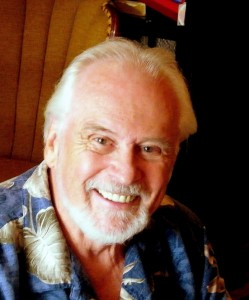 Patrick J. Keane is Professor Emeritus of Le Moyne College. Though he has written on a wide range of topics, his areas of special interest have been 19th and 20th-century poetry in the Romantic tradition; Irish literature and history; the interactions of literature with philosophic, religious, and political thinking; the impact of Nietzsche on certain 20th century writers; and, most recently, Transatlantic studies, exploring the influence of German Idealist philosophy and British Romanticism on American writers. His books include William Butler Yeats: Contemporary Studies in Literature (1973), A Wild Civility: Interactions in the Poetry and Thought of Robert Graves (1980), Yeats’s Interactions with Tradition(1987), Terrible Beauty: Yeats, Joyce, Ireland and the Myth of the Devouring Female (1988), Coleridge’s Submerged Politics (1994), Emerson, Romanticism, and Intuitive Reason: The Transatlantic “Light of All Our Day” (2003), andEmily Dickinson’s Approving God: Divine Design and the Problem of Suffering(2007).
Patrick J. Keane is Professor Emeritus of Le Moyne College. Though he has written on a wide range of topics, his areas of special interest have been 19th and 20th-century poetry in the Romantic tradition; Irish literature and history; the interactions of literature with philosophic, religious, and political thinking; the impact of Nietzsche on certain 20th century writers; and, most recently, Transatlantic studies, exploring the influence of German Idealist philosophy and British Romanticism on American writers. His books include William Butler Yeats: Contemporary Studies in Literature (1973), A Wild Civility: Interactions in the Poetry and Thought of Robert Graves (1980), Yeats’s Interactions with Tradition(1987), Terrible Beauty: Yeats, Joyce, Ireland and the Myth of the Devouring Female (1988), Coleridge’s Submerged Politics (1994), Emerson, Romanticism, and Intuitive Reason: The Transatlantic “Light of All Our Day” (2003), andEmily Dickinson’s Approving God: Divine Design and the Problem of Suffering(2007).
Contact: patrickjkeane@old.numerocinqmagazine.com
